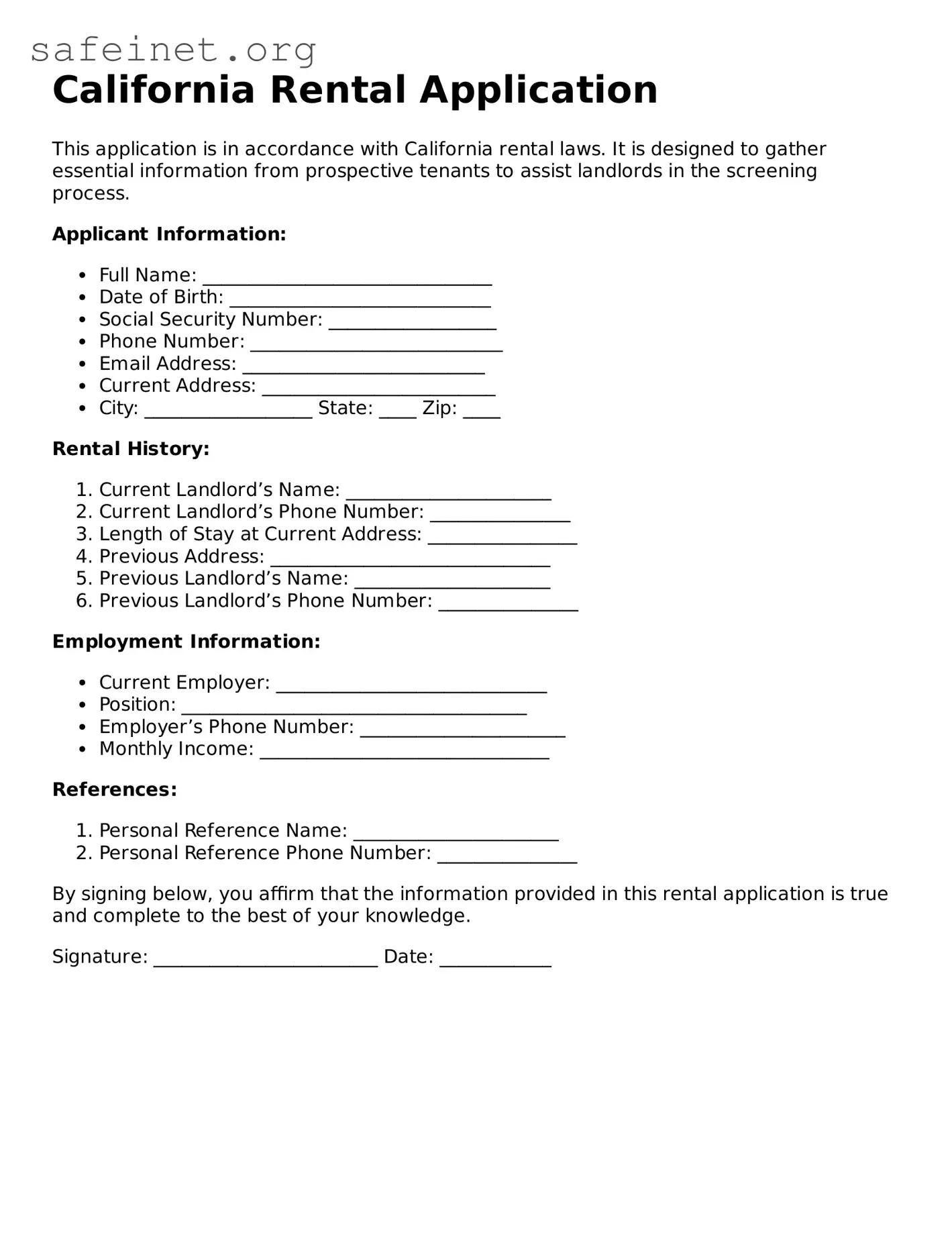What is the California Rental Application form used for?
The California Rental Application form is designed for tenants seeking to rent a residential property. Landlords use this form to gather essential information about potential tenants, which helps them evaluate applicants’ backgrounds, financial stability, and suitability for the rental property. This process is crucial for making informed decisions and maintaining a safe living environment for current and future tenants.
What information is typically required on the application?
The application usually requests personal details such as the applicant’s full name, contact information, and social security number. In addition, employment history, income sources, and references are key components. Many applications also ask about previous rental experiences, credit history, and any criminal background. Providing complete and accurate information increases the chances of approval.
Can a landlord charge a fee for processing the application?
Yes, California law allows landlords to charge a fee for processing rental applications. This fee typically covers the costs of background checks, credit reports, and other administrative tasks involved in screening tenants. However, the charge must be reasonable and cannot exceed specific limits set by state guidelines. It's important for applicants to know this fee is non-refundable, regardless of the outcome.
How can I ensure my application is strong?
To create a strong application, submit a complete and accurate form along with the required documentation. Providing references from previous landlords and employers can enhance credibility. Additionally, applicants should be prepared to show proof of income and, if requested, a credit report. Presenting oneself professionally and being responsive during the application process also demonstrates reliability.
What happens after I submit my application?
Once the application is submitted, the landlord will review it and may conduct background checks and verify references. This review process can take a few days to a week. Applicants should be aware that landlords may deny an application based on credit issues, rental history, or insufficient income. If accepted, the landlord will typically follow up with a rental agreement and additional paperwork.
Can I get my application fee back if I’m denied?
Generally, application fees in California are non-refundable, even if an application is denied. It's crucial to clarify the terms upfront and understand the application process before submitting payment. If a landlord fails to comply with proper screening laws, however, applicants might have grounds to contest the situation, but this is typically rare.
